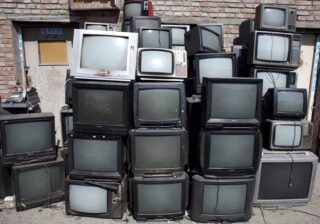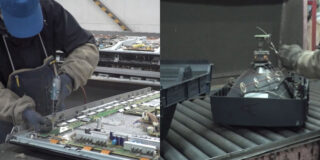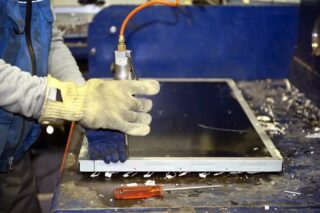Televisions
| Problems and Particular Challenges with Recycling this item | Televisions contain a variety of materials, such as plastic, heavy metals, and other toxins, that can pose a risk of pollution if not dealt with properly and a risk to human health if they disposed of carelessly which makes them hard to recycle. |
  |
|
| Procedures, Capacities, and Facilities for Disposing | The recycling of televisions generally starts by taking them apart manually and segragating the different components. The reusable commodities are then separated and sold in the market. These are components like plastic, wood, copper, and many others. Circuit boards (CRTs) go to specialized recyclers that processes and isolates the precious metals. Since CRTs have been around so long, the technology for dealing with them is relatively advanced. They are carefully taken apart, with the hazardous phosphorous going to disposal and the glass going back into manufacturing new televisions (all the lead stays imbedded in the glass, so it does not pose a health or environmental threat). |
  |
|
| E Waste Partners for Processing Safely and Successfully | Best Buy (https://www.bestbuy.com/site/services/recycling/pcmcat149900050025.c?id=pcmcat149900050025) LG (http://www.lgrecyclingprogram.com/) Vizio (https://www.vizio.com/en/environment) Samsung (https://www.samsung.com/us/aboutsamsung/sustainability/environment/responsible-recycling/) Sony (https://eridirect.com/sony/) TLC (https://www.tcl.com/us/en/sustainability) |
